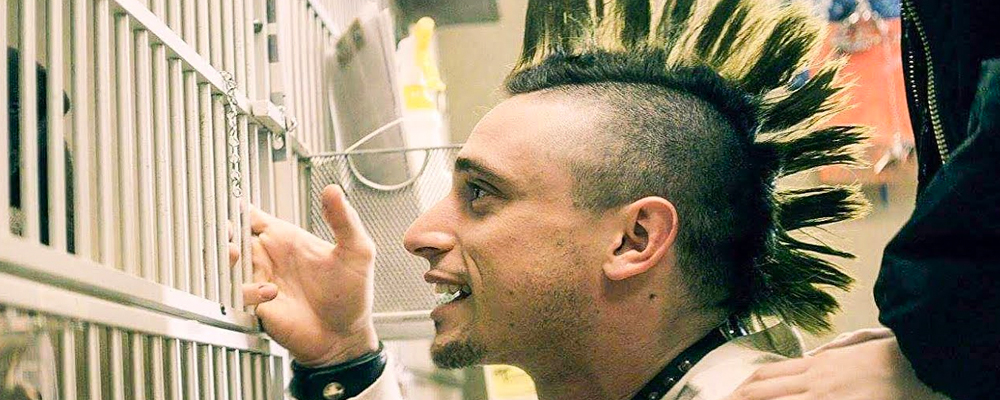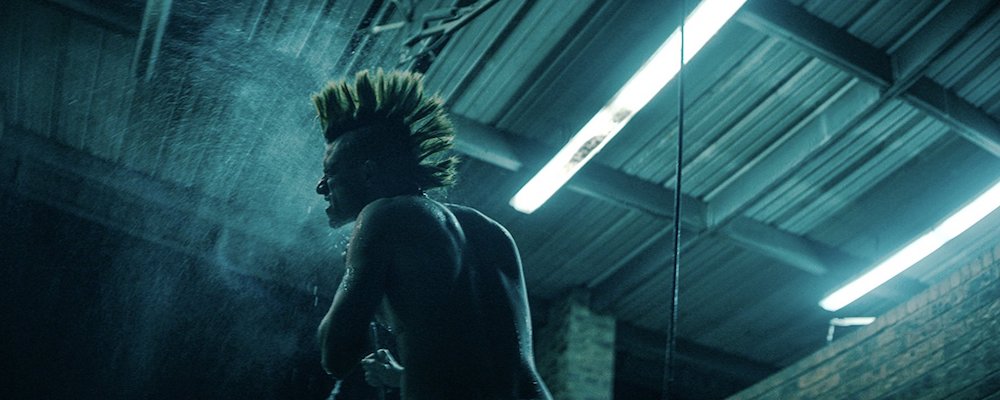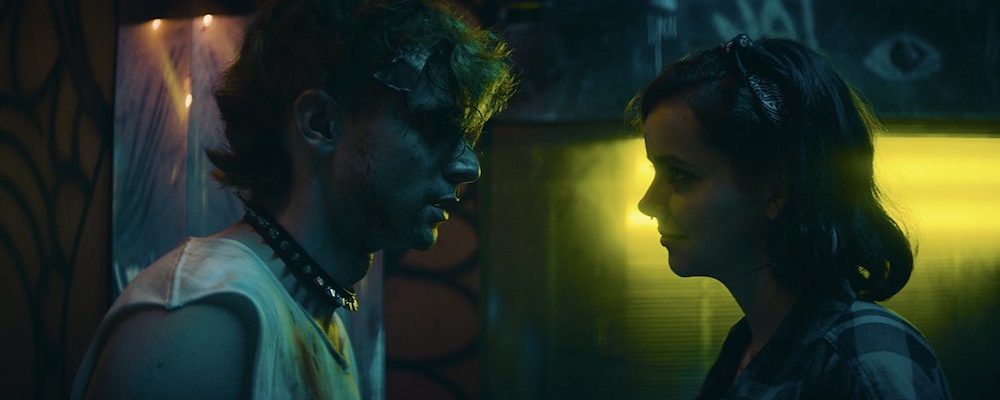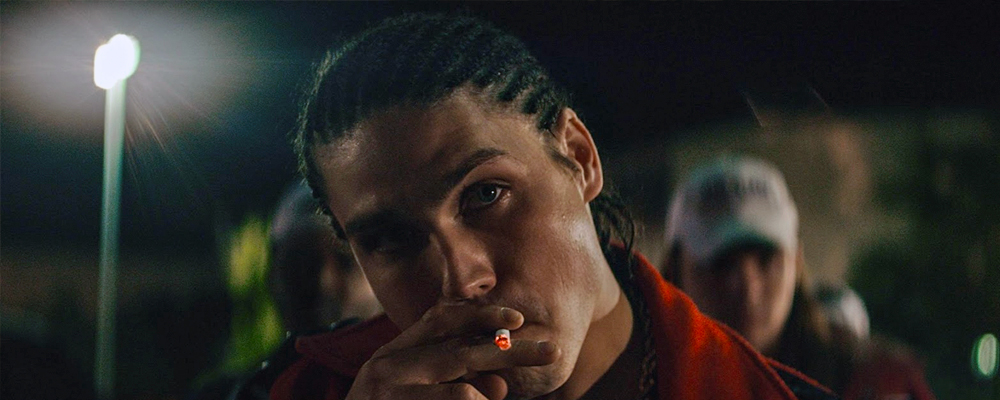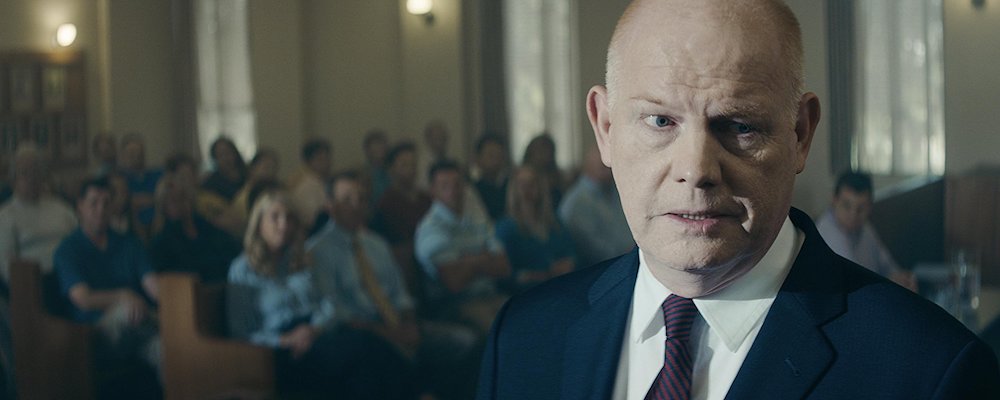‘Bomb City’ Paints Startling Portrait of Punk Rocker’s Tragic Fate
Aaron Berke
Sometimes a single act of violence is so powerful, so devastating, it can rock an entire community to its core. This is the premise of “Bomb City,” a movie depicting the real-life events surrounding the 1997 death of 19-year-old punk rocker Brian Deneke by the hands of 17-year-old jock Dustin Camp. Like the real event, which received national media atention, the film is powered and defined by the single, murderous act. Though the death doesn’t happen until the film’s final act, its impact colors everything before and after, leaving the viewer with a feeling of total nihilistic devastation. It’s a feeling that will haunt you long after the credits roll.
“Bomb City” follows Brian Deneke (Dave Davies), who was an artist for Stanley Marsh 3’s art project, “Dynamite Museum,” and lead singer of a punk rock band, “The White Slave Traders,” in Amarillo, Texas. Brian lived in a makeshift art collective with Ricky, (Logan Huffman) King, (Henry Knotts), Oles (Eddie Hassell), his brother, Jason, (Dominic Ryan Gabriel) and his girlfriend, Jade (Mae Mae Renfrow). Deneke and his friends were considered social outcasts in the small, conservative Texas community, and dealt with heavy prejudice from the local police and high school jocks. One such jock, Dustin Camp (renamed Cody Cates in the film), and his football-playing buddies, personally targeted Brian and his friends. What began as a rivalry of taunts and curses eventually descended into full-on violence, ending with a deadly fight between the two factions.
Writer/Director Jameson Brooks does a remarkable job broadening material that could have easily been much narrower. With real-life tragedies it’s often tempting to focus the storytelling on a single hero and villain, which in this case would be Deneke and Camp, respectively. Instead, Brooks uses his camera naturalistically, granting equal weight and levity to scenes focusing on Deneke’s group of punk-rockers and Camp’s gang of jocks. The scenes between Deneke and his friends are less about establishing character and more about depicting an American counter-culture that espouses anarchy. Meanwhile, Brooks’ depiction of Camp’s football buddies is one of a more stereotypical and traditionally “American” brood that are more or less clean cut and ironically steeped in prejudice. What emerges is a picture of extreme tensions between class, where the jocks harass the punk rockers for being different, and the police exacerbate the situation by showing preferential treatment.
When police catch two of Deneke’s friends spray painting graffiti and they flee to Deneke’s apartment, the officers cut the power and break down the door, macing and assualting the group while making arrests. With their spiked hair, eye shadow, leather jackets, and t-shirts flaunting slogans like “destroy everything,” the punks are perfect jail fodder — even though most of them didn’t commit any crime. Meanwhile, when the same police officers arrive at a tailgating party of Camp’s football buddies, catching the teenagers with open beer cans and a massive bonfire in the middle of an empty field, they let them off with a polite warning. Thus, setting the premise that these kids “are respectable” with their football jerseys, clean haircuts, and social status.
The filmmaking in “Bomb City” is fascinating, and there are several connective elements that imbue the narrative with deeper meaning. There’s the narration from Marilyn Manson which discusses the propagation of violence in America and its distorting influence on kids. The narration bookends the film, creating an authorial perspective for the otherwise naturalistic directorial style. There’s also an interesting sequence which discusses the literal term ‘bomb city.’ The name deriving from the fact that Amarillo is home to a massive nuclear stockpile, the United States’ only nuclear weapons assembly and disassembly plant, with the town’s human population merely an anecdotal fact. Brooks uses this to help create the film’s nihilistic identity. With a feeling of impending doom permeating the town, Brooks suggests that excessive violence is a natural response when nothing else matters.
Perhaps the most crucial element in honing “Bomb City’s” narrative impact is the editing. Because of the film’s naturalistic tendencies, there’s no clear protagonist or specific sense of where the film is headed. But the film’s nonlinear editing style uses Camp’s murder trial to create a shape for the narrative. The film opens with a set-up of the mob fight that ends with Brian’s death. Early on the film hints at a trial discussing the violent lifestyle of the punk rockers, but over the course of the film we learn that appearances can be deceiving, and the rockers are not violent. They only fight back when antagonized by the young jocks.
At various moments throughout the film, it cuts back to different teenagers being examined on the witness stand, both Deneke’s and Camp’s friends. The examinations are used at key moments to rev up the film’s suspense, creating the sensation that the film is building up to something terrible. We know someone died, but the facts are hazy. As viewers, we’re invited to try putting two and two together by closely examining the film’s various moments of antagonization between punk rockers and football players. By the time Brooks unveils the deadly mob fight, the anticipation is built to a fever pitch. The film’s central moment of violence ripples into all the preceding and subsequent scenes with horrific grace.
The mob scene is filmed with an unpleasant dizziness. Brooks never focuses on the weapons or the hits. It’s not about glorifying violence. It’s about the quick, unruly and unsettling horror that takes place when people lose control and give into their most terrible impulses. The atmospheric music, composed by Cody Chick and Sheldon Chick, underscores this point. The composers alternate between unsettling atonal pitches and ensnaring, sinister melodies that emphasize the film’s devastating and morally barren conclusion.
Brooks utilizes camerawork, editing techniques, and superbly timed music to create an entrancing and original cinematic experience. Brian Deneke’s death was a crime that went mostly unpunished, and his murder left an indelible impact on the Amarillo community. That impact is masterfully recreated in “Bomb City,” which honors Deneke’s story and uses it to dramatically depict the horrific nature of violence. “Bomb City” utilizes real-life tragedy to present a struggle of class warfare and social acceptance that remains the epitome of everyday American conflict.
“Bomb City“ opens Feb. 9 in select theaters and VOD.

